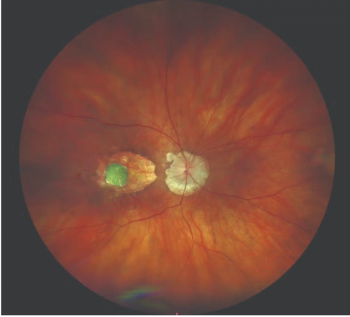
- Modern Retina May and June 2025
- Volume 5
- Issue 2
The future promise of advanced therapies in ophthalmology
Cell and gene therapies in development for unmet needs.
Six years after the first approved gene therapy in ophthalmology, the field is seeing a flurry of activity in innovative cell and gene therapy (CGT) studies addressing high unmet needs. This article will explore what could be ahead.
Future opportunities
The challenge is developing the field with additional CGTs to address a range of diseases with burdensome or ineffective treatment options. Some of these diseases are extremely rare—an estimated 0.1% of people older than 40 years develop macular telangiectasia type 2, for example1—whereas others, like age-related macular degeneration, are more common.2 With their curative intent and regenerative potential, such therapies could be strong candidates for these indications.
The eye’s physiology may also explain the growth of novel CGTs in development in ophthalmology. Therapies may be administered locally and in small volumes because the organ is relatively compartmentalized. Additionally, strong inflammatory responses may be avoided by using targeted delivery of gene therapy vectors to regions of the eye that have immune privilege.
Current clinical studies
Although the number of new phase 1/2 CGT clinical studies in ophthalmology has been moderate and static in the past 3 to 4 years, there was a marked increase in 2023—a possible sign of recent progress (Figure 1).3
Key takeaways from these current studies include the following:
Pathway possibilities: A phase 2 study component can produce biologics license application (BLA)–enabling data under the accelerated approval pathway, which allows for surrogate or intermediate end points. Some drug sponsors will likely take this approach as they pursue novel therapies for rare eye diseases.
Regulatory filings incoming: Analysis of study length for CGTs in ophthalmology revealed that about half of phase 2 studies in ophthalmology have a duration of 3 years or less (Figure 2). 3 If these studies produce BLA-enabling data within that time frame, we may expect to soon see regulatory filings for drugs that achieve their primary or surrogate end points. Furthermore, an analysis of ophthalmology CGT candidates with the potential to finish collecting BLA-supporting evidence in the near term suggests that the industry is poised to see a spike in activity in this space (Figure 3).4
A diverse and innovative landscape
For many years, there has been a heavy focus on biologicals and traditional pharmaceuticals for disease management in ophthalmology. These drugs tend to treat symptoms, may only delay degenerative processes, and often require repeat injections or are part of a maintenance therapeutic program. There are currently no approved interventional treatments for some indications, like many forms of retinitis pigmentosa (RP).
CGTs often aim to address the underlying cause of disease, and many have curative intent. For rare genetic diseases, like RP, gene replacement therapy can address the mechanism behind this progressive and debilitating disease.
Because RP can be caused by a single mutation in any one of several dozen genes, some CGT manufacturers are developing gene-agnostic approaches to boost patient access. Developers are also using different therapeutic agents (gene replacement therapy, modifier gene therapy, therapeutic proteins secreted by cellular implants) and different routes of administration (subretinal, suprachoroidal, intravitreal) to optimize the delivery of drug candidates and improve clinical response.
This diversity in approaches and the potential for curative outcomes make CGTs an exciting and promising therapeutic modality in the ophthalmology space. They offer hope for patients with difficult-to-treat or previously untreatable conditions.
Louis Cicchini, PhD
Director, Scientific Affairs, Cell and Gene Therapy, Cencora, Inc.
Author’s Note: This article may contain marketing statements and shall not constitute legal advice. Cencora, Inc strongly encourages readers to review the references provided with this article and all available information related to the topics mentioned herein and to rely on their own experience and expertise in making related decisions.
REFERENCES
Issa, PC, Gillies, MC, Chew, EY, Bird, AC, Heeren, TF, Peto, T, Holz, FG, & Scholl, HP (2012). Macular telangiectasia type 2. Progress in Retinal and Eye Research, 34, 49–77. https://doi.org/10.1016/j.preteyeres.2012.11.002
New study finds higher AMD prevalence & high county variation. (2023, April 14). Prevent Blindness. https://preventblindness.org/new-study-amd-prevalence-2019/
GlobalData Plc. (2025). Data generated from proprietary database. [Unpublished data].
Evaluate Pharma. (2025). Data generated from proprietary database. [Unpublished data]. Norstella.
Articles in this issue
6 months ago
Highlights from ARVO 20257 months ago
Drugs to treat GA: Yes, please!7 months ago
Pearls for engaging in clinical trialsNewsletter
Keep your retina practice on the forefront—subscribe for expert analysis and emerging trends in retinal disease management.












































